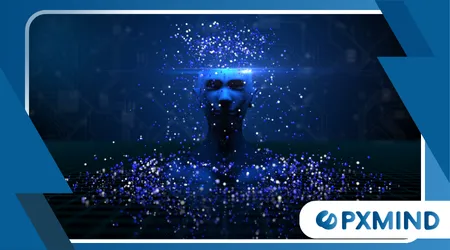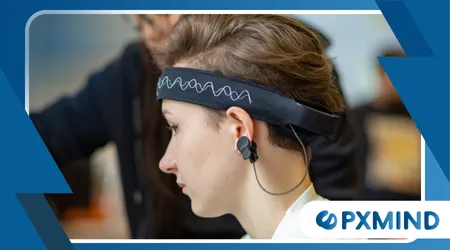The Neuroscience of Focus and Attention

The Neuroscience of Focus and Attention. Recent scientific advancements have begun to unravel the complex mechanisms that govern our ability to pay attention.
Anúncios
This column explores how our brains manage this critical function. The journey into the neural architecture of focus reveals fascinating insights.
The Attentional Networks of the Brain
The brain’s ability to focus is not governed by a single region. Instead, it relies on a sophisticated interplay between two primary networks. These are the dorsal and the ventral attention networks.
The dorsal network, also known as the top-down network, is responsible for goal-directed attention.
It activates when you consciously choose to focus on something specific. This is a deliberate, volitional process.
Its counterpart, the ventral network, or bottom-up network, is activated by unexpected or salient stimuli.
It acts as a kind of neural alarm system. This system orients your attention to a sudden noise or a flash of light.
Together, these two networks work in tandem, allowing us to maintain focus while remaining aware of our surroundings.
The interaction between them is a delicate and essential balance. When this balance is disrupted, our ability to concentrate is severely compromised.
The Chemical Messengers of Concentration
Attention is not just about brain structures; it is deeply rooted in neurochemistry. Specific neurotransmitters play a crucial role in regulating focus and alertness.
Dopamine, often associated with pleasure and reward, is a key player. It acts like a spotlight, enhancing the brain’s signals related to a specific task.
Higher levels of dopamine improve our ability to sustain focus on a rewarding task.
Another critical neurotransmitter is norepinephrine. It is responsible for arousal and alertness.
Norepinephrine helps us maintain vigilance and respond to changes in our environment.
These chemical messengers work together to fine-tune our brain’s attentional state.
Read here: How the Brain Processes Emotions
They ensure we are both receptive to important information and able to ignore distractions.
A lack of balance in these systems can be a contributing factor to attention-related disorders.
The Fallacy of Multitasking The Neuroscience of Focus and Attention
For years, many people have prided themselves on their ability to multitask.
The reality, however, is that the brain cannot truly perform two demanding cognitive tasks at once. What we call multitasking is actually rapid task-switching.
This process, while seemingly efficient, comes with a significant cognitive cost. Each time the brain switches tasks, there is a delay. This delay is known as a switching cost.
This cognitive friction reduces overall productivity and increases the likelihood of errors.
Researchers from the University of California, Irvine, found that after an interruption, it takes an average of over 23 minutes to fully return to the original task. This is a very real cognitive toll.
Check this out: How the Brain Learns: A Simple Guide
Consider a software developer attempting to write a complex algorithm while constantly checking and responding to a stream of Slack messages.
Their brain is not doing both at once. It is rapidly switching between the two tasks. Each switch depletes their cognitive resources.
This leads to slower progress and more bugs in their code. It’s a perfect illustration of the limits of attention.

The Brain’s Plasticity and Training Focus
The brain is remarkably plastic, meaning its structures and functions can change over time.
This plasticity offers hope for those struggling with attention deficits. We can actively train our brains.
A fascinating concept in neuroscience is that attention can be strengthened, much like a muscle.
See how interesting: The Psychology of Habit Formation (And How to Use It)
Consistent practice can improve a person’s capacity for deep, sustained focus. This is a core tenet of modern neuroscientific research on attention.
Here is a simple table detailing the brain regions involved in attention:
| Brain Region | Primary Role in Attention |
| Prefrontal Cortex | Goal-directed attention and executive function |
| Parietal Lobe | Spatial awareness and sensory integration |
| Cingulate Cortex | Task engagement and motivation |
| Superior Colliculus | Orienting visual attention to stimuli |
Consider the experience of a student using the Pomodoro Technique. They dedicate 25 minutes to a single subject, free of all distractions.
The intentional act of removing distractions forces the brain to practice deep work.
Over time, the neural pathways associated with sustained focus are strengthened. Their ability to focus becomes more robust.
The brain’s attentional system is not a static instrument. It is more like a river.
A river can either flow chaotically, branching off into multiple, shallow streams, or it can be guided into a deep, purposeful channel. Our daily habits determine which path our attention takes.
Leading researchers, like neuroscientist Dr. Andrew Huberman, have extensively discussed the role of intentional practice.
His work emphasizes that a focus on controlling dopamine and norepinephrine pathways can lead to profound improvements in concentration.
He argues that the ability to delay gratification is a key element.
Is it possible to thrive in a world that constantly begs for our attention? Absolutely, but it requires understanding the brain.
This deeper comprehension of The Neuroscience of Focus and Attention allows us to be more intentional.
It is a practical guide
Understanding The Neuroscience of Focus and Attention is more than just academic knowledge; it is a practical guide to living a more present life.
By recognizing the brain’s attentional networks and neurochemical processes, we can take control. We can develop strategies to reclaim our focus.
Our ability to concentrate is a vital resource. It deserves to be protected and cultivated.
This knowledge empowers us to create environments and habits that support deep work. It helps us thrive in a complex and competitive world.
The insights from the field of The Neuroscience of Focus and Attention are not just for scientists. They are for all of us, offering a roadmap to better cognitive health.
The principles are simple, yet their impact is profound. We can all learn to direct our minds more effectively.

Frequently Asked Questions The Neuroscience of Focus and Attention
Can you really improve your attention span?
Yes, neuroplasticity confirms that you can. Regular practice, mindfulness, and eliminating digital distractions can physically change your brain.
These habits help to strengthen the neural pathways responsible for focus.
How does sleep affect focus?
Sleep is critically important. It allows the brain to consolidate memories and clear out metabolic waste.
Without adequate sleep, the prefrontal cortex—the hub of executive function—is impaired. This leads to reduced focus and alertness during the day.
Does caffeine help with focus?
For many, caffeine can temporarily improve alertness and focus. It works by blocking adenosine, a neurotransmitter that promotes sleep.
However, excessive consumption can lead to anxiety and jitteriness. These side effects can actually harm concentration.
++The Neuroscience of Attention: Attentional Control and Selection
